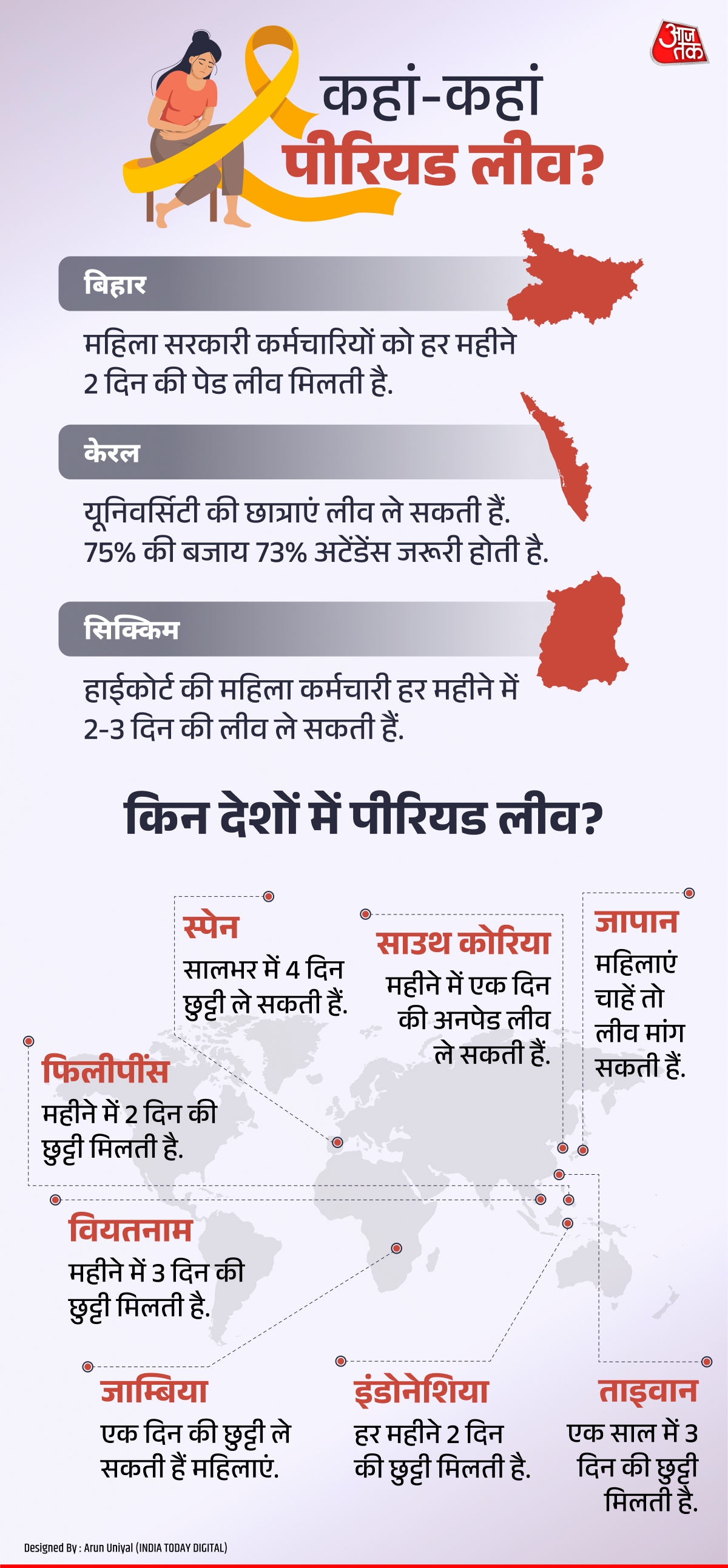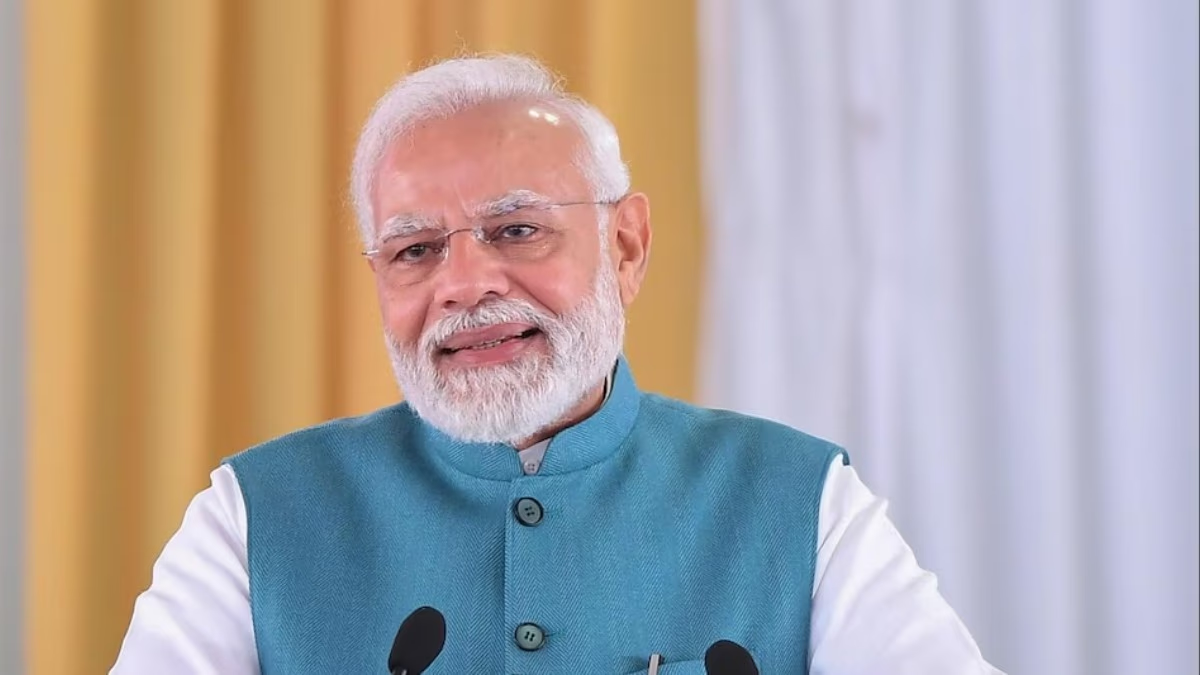Should working women be granted leave during their periods? The topic is both controversial and subject to debate. The demand for period leave in India has been long-standing, yet opposition exists, even among women. However, the Supreme Court has now directed the central government to draft a model policy on the same.
A bench led by Chief Justice D.Y. Chandrachud, Justice J.B. Pardiwala, and Justice Manoj Misra stated that the issue of period leave policy is a matter for consideration by the government, not the courts.
The bench expressed concerns that a judicial decision could harm employment prospects for women, as companies might hesitate to hire female workers. The court emphasized that the government should consult with all states and stakeholders to formulate a comprehensive policy and should not hinder any state-level initiatives on the matter.
The court's directive follows a previous petition last year for period leave. The bench, led by Chief Justice D.Y. Chandrachud, had advised the petitioner to approach the Ministry of Women and Child Development. However, the petitioner claims that the central government has yet to make a decision.
But why the need for period leave?
The provision would allow women to take a day off during their menstrual cycle without financial penalty.
Menstruation is a perfectly normal bodily function. Most women have a menstrual cycle that spans 28 days, but some may experience it every 21 to 35 days. Advocates argue that some women experience severe discomfort during this time. Medical science has identified that women undergo around 200 physiological and psychological changes before and during menstruation. These include increased irritability, feelings of sadness, a tendency to cry easily, persistent abdominal and back pain, fatigue, and weakness.
According to Professor Sioban Harlow of the University of Michigan, 15% to 25% of women experience severe pain during their periods. A 2017 study in the Netherlands surveyed 32,748 women, with 14% reporting they had taken time off work or school during their periods. Studies suggest that menstrual-related issues result in a loss of 8.9 days of productivity for employees annually.
Some research indicates that most women don't experience symptoms severe enough to disrupt their daily tasks. According to an American journal, 20% to 32% of women suffer from premenstrual syndrome so severely that it affects their work. For 3% to 8% of women, the discomfort is quite serious.

Source: aajtak
The state of period leave in India
No central laws or policies mandate period leave in India. In 2020, food delivery company Zomato announced period leave, offering 10 days of paid leave annually. Following Zomato's lead, several startups have implemented similar policies.
In India, only three states have enacted laws regarding period leave: Bihar, Kerala, and Sikkim. Bihar was the first, granting female state employees two days of menstrual leave each month since 1992, available until the age of 45. In January last year, Kerala's Chief Minister announced period leave for government university students, along with reducing mandatory attendance from 75% to 73%. This May, Sikkim's High Court decided to grant female registry employees two to three days off each month.
At the central level, some members of Parliament have introduced private bills advocating for period leave, but they have been largely ignored. Last December, then-minister Smriti Irani stated that period leave is unnecessary, as menstruation is not an illness or disability and that there is no current proposal to introduce such a leave policy.

Source: aajtak
Global perspective on period leave
Historian P. Bhaskaranunni claimed in his book 'Kerala in the 19th Century' that in 1912, a government school in Tripunithura of Cochin (now Ernakulam, Kerala) allowed female students period leave. In Soviet Union (1922), women could take two to three days off monthly without salary deduction, although this was later repealed in 1927 due to discrimination concerns.
Japan has had a law supporting period leave since 1947 but uptake is low; a 2014 survey showed only 0.9% of women used it. Indonesia and the Philippines also grant two days off monthly, while Taiwanese women have three days yearly at half pay. South Korea offers one day per month, and in Vietnam, a 30-minute break during menstruation was extended to a three-day leave in 2020.
Zambia is the only country in Africa with mandatory period leave since 2015. Spain is the trailblazer in Europe, recently legislating period leave, which requires a doctor's note for approval. Italy introduced a bill in 2016, but it was not passed, and the US has no such laws or regulations.
Why is period leave not a norm in India?
Although there have been long-standing calls for paid period leave in India, there is no consensus. The central government opposes paid period leave, citing potential discrimination against female employees. Smriti Irani's parliamentary statement last year highlighted concerns that it could reduce women's participation in the workforce and discourage companies from hiring women. Critics also warn of abuse, though statistics from Japan and South Korea suggest that usage is minimal.




